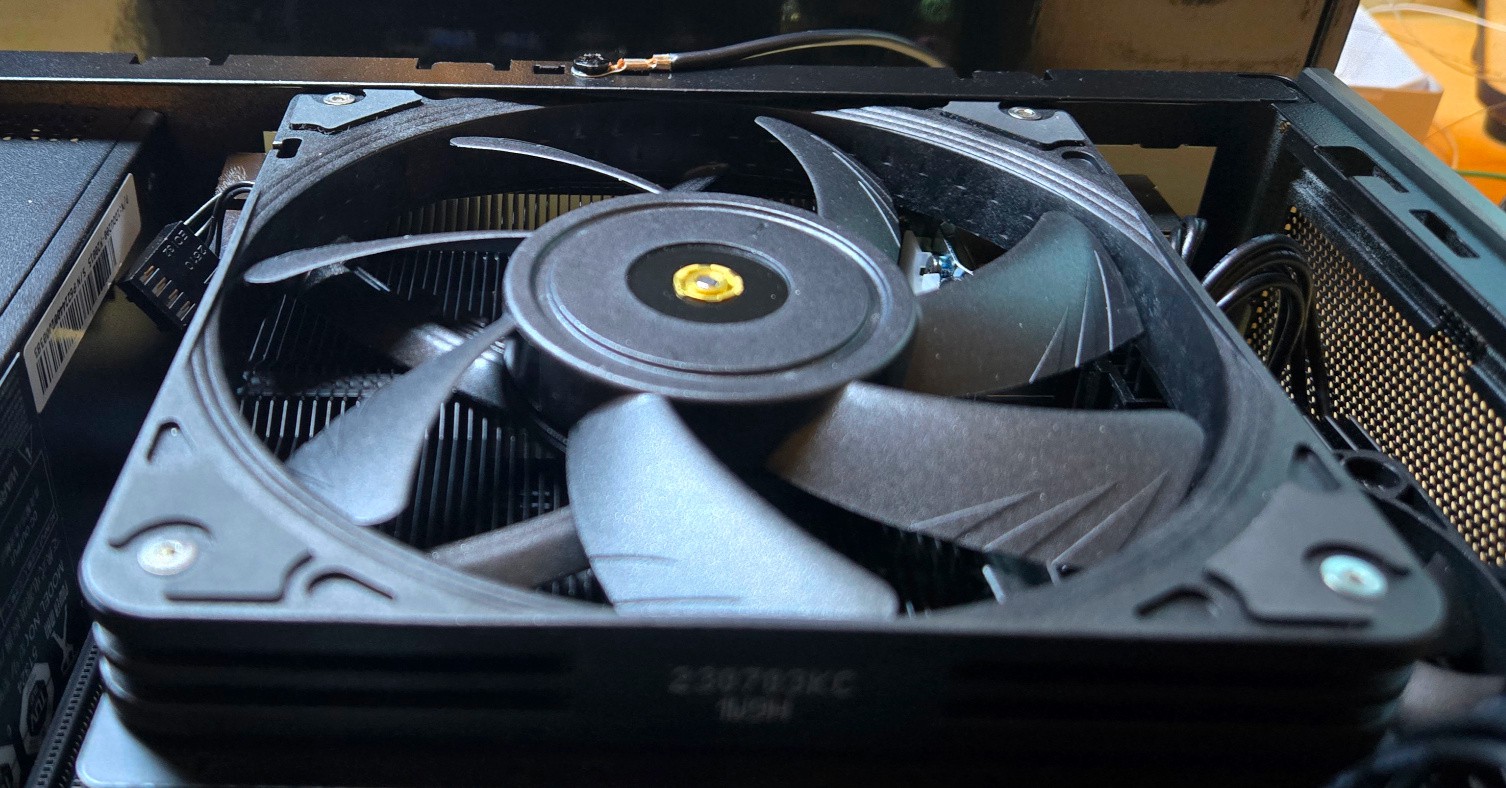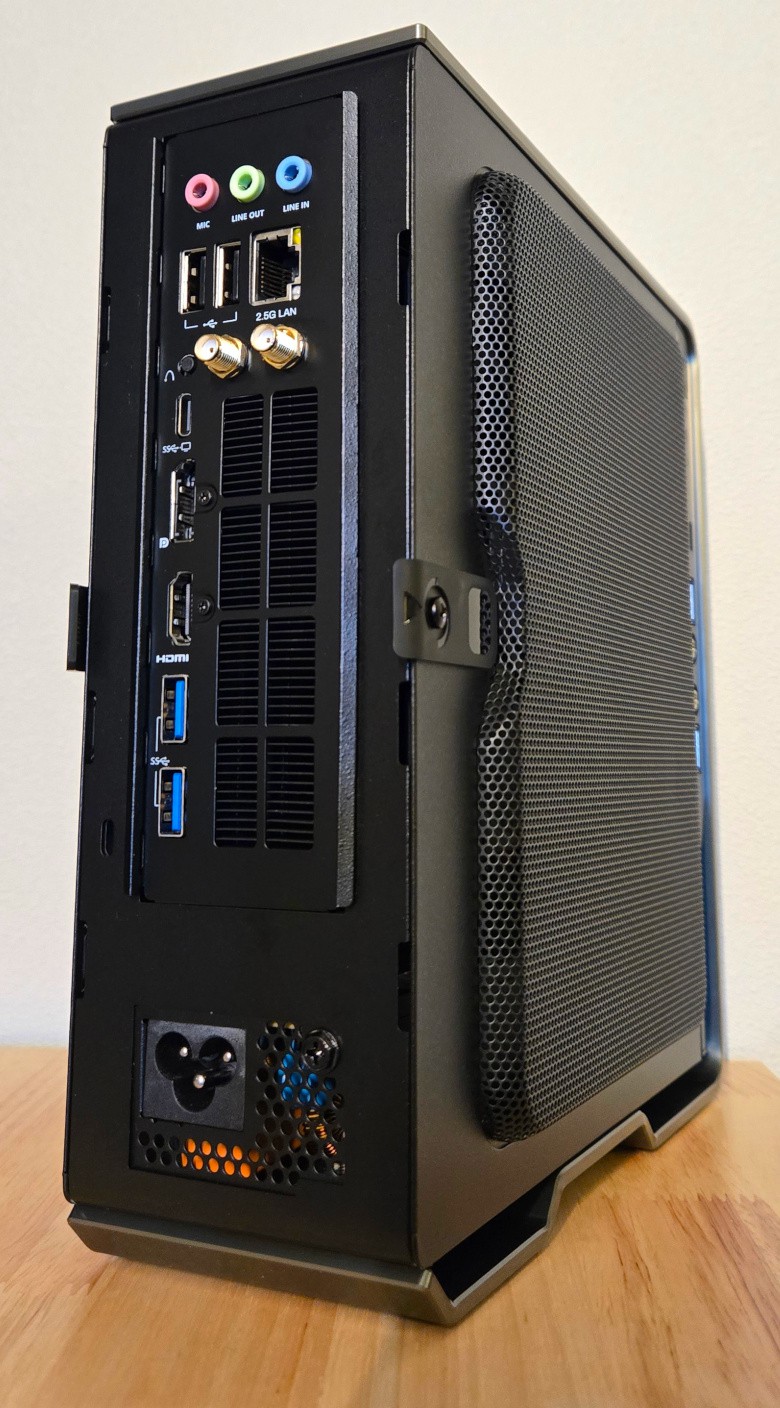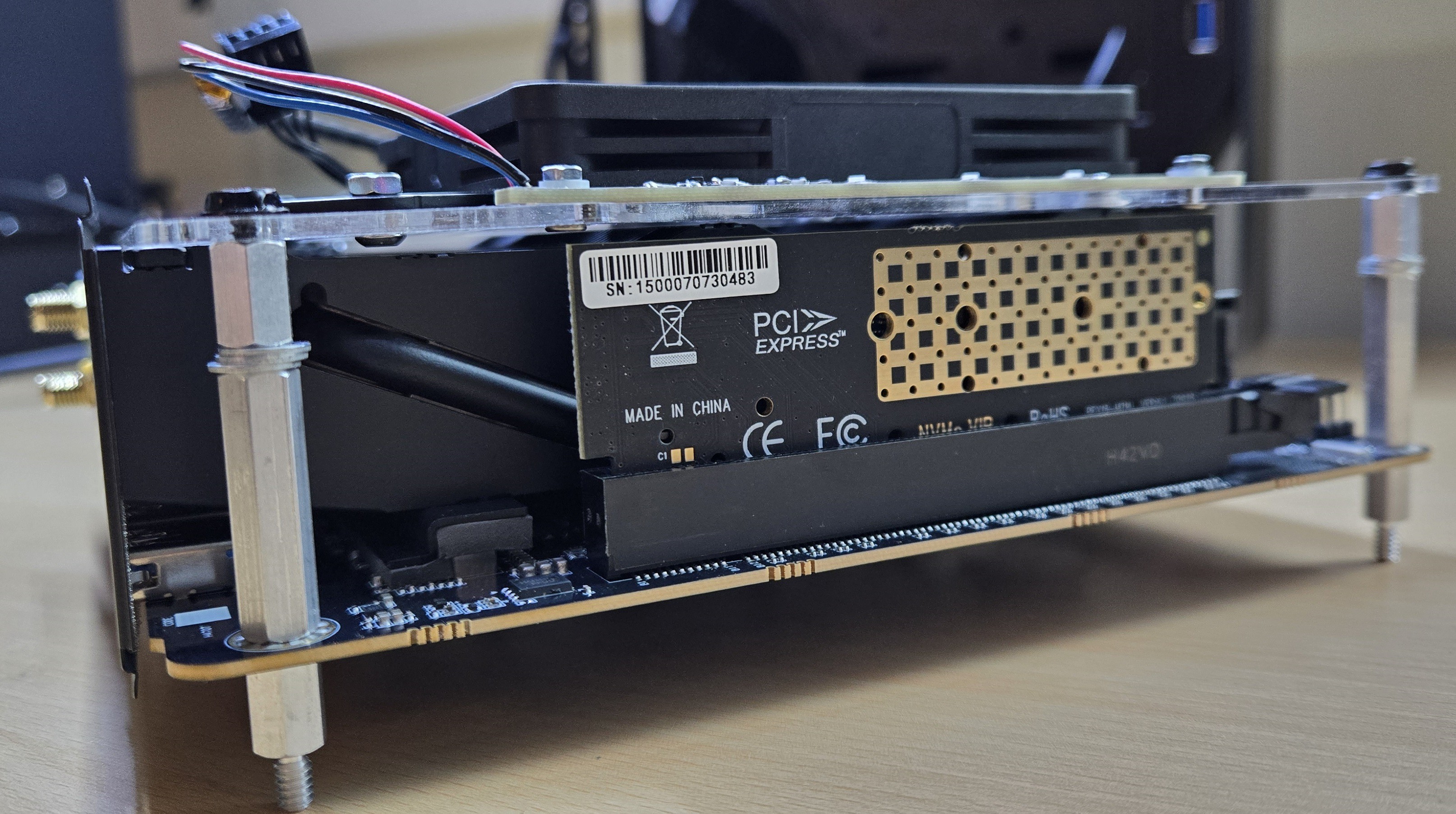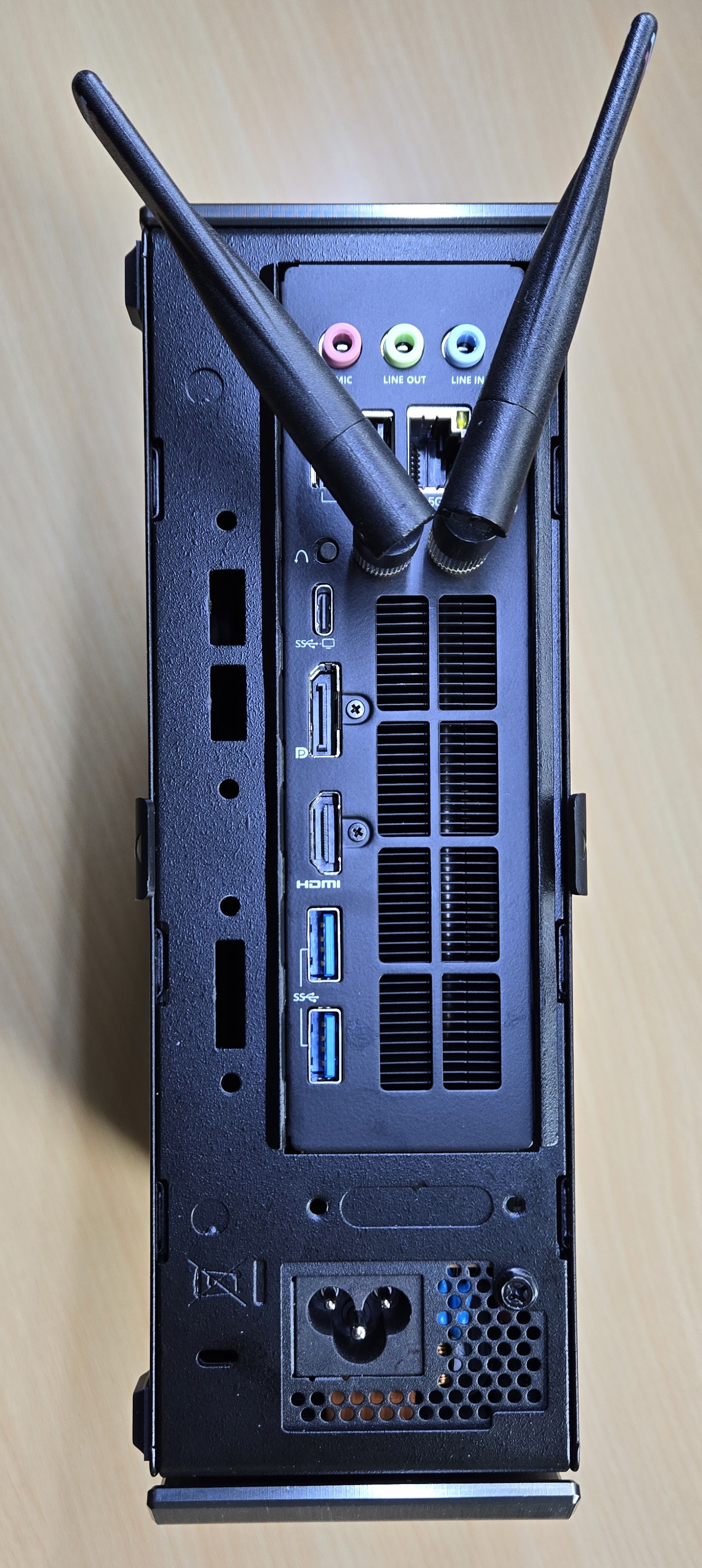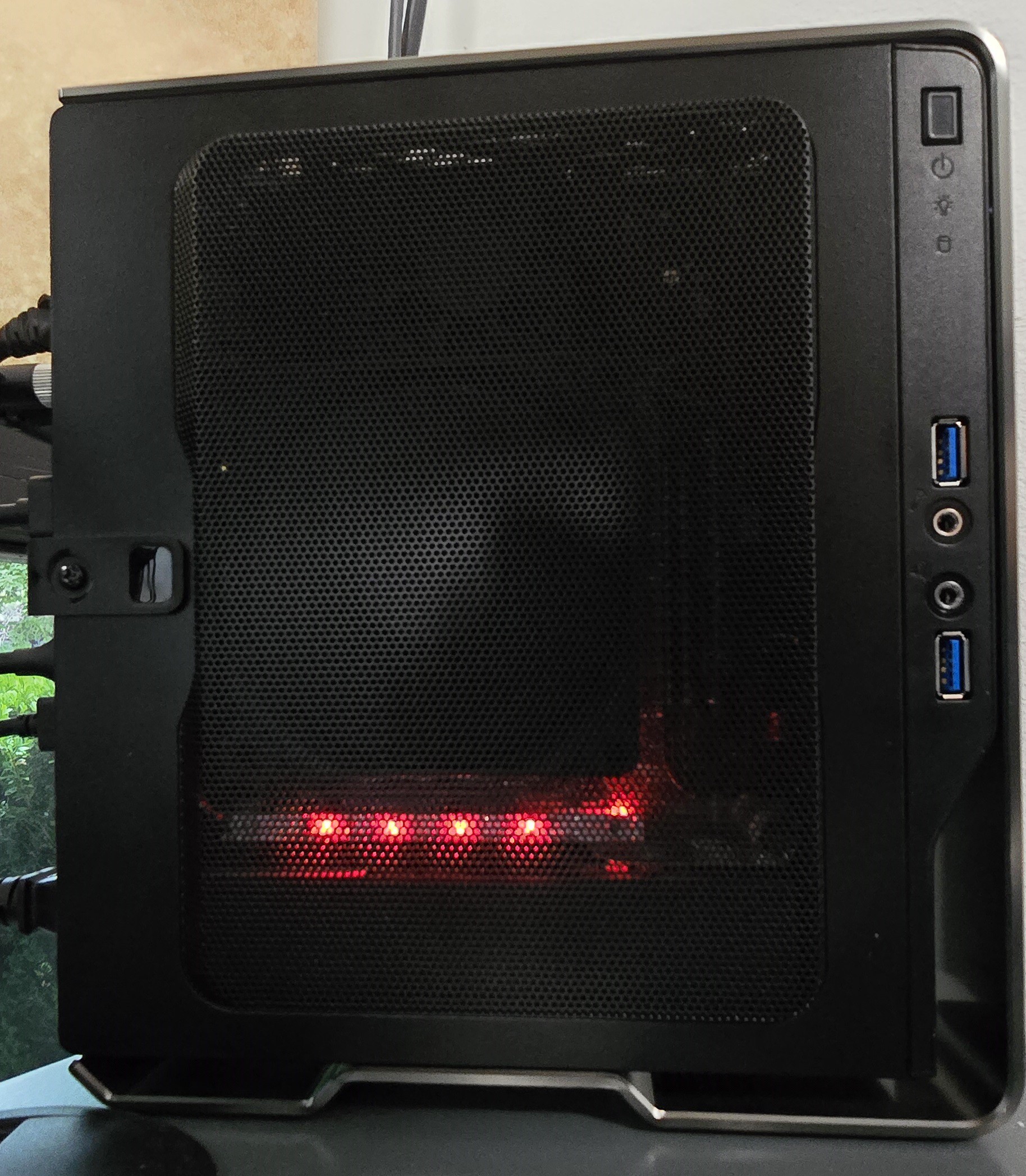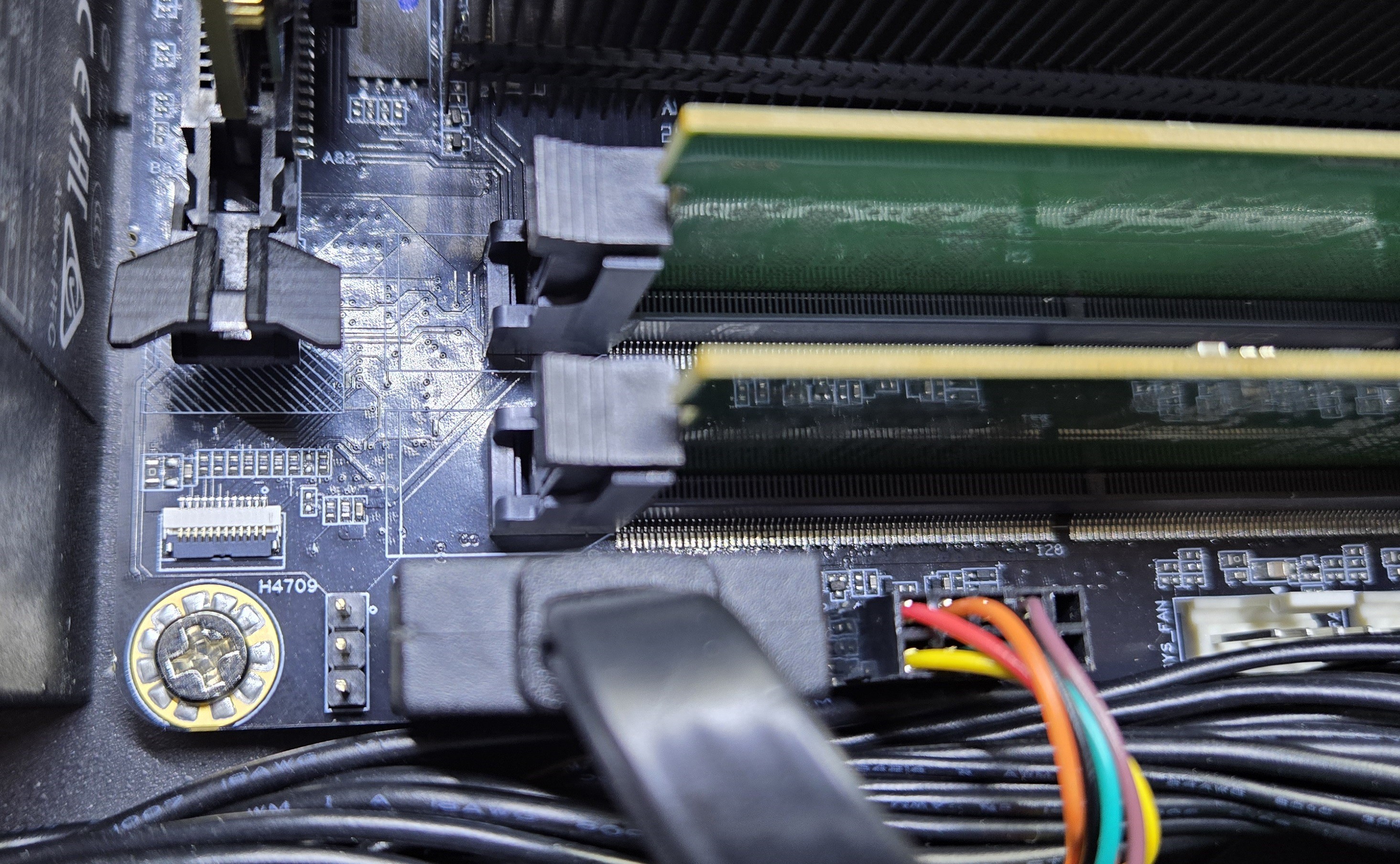-
InWin Chopin MAX
11/12/2024 at 06:03 • 0 commentsI made another build with the BD790i in the InWin Chopin Max.
The NF-A12x15 fan just clear the back of the case. I had to remove the corner pads in the end. I use the both fan bracket, the one on the back help to have the fan stable. With the back bracket screwed down, it makes accessing anything more difficult since the fan is in the way.
![]()
I still think a mounting option for a 92mm fan would help a lot. While the estimated air flow was similar, the additional static pressure of the 92mm help push air out more. I did try the NF-A9 PWM, the case did close but the panel mesh was being pushed out. Thinner 92mm bracket may work.
The Chopin MAX has a very clean look.
![]()
I think the 92mm bracket exist as seen here in the MINISFORUM 790S7. Need to ask if they would sell those as accessory.
-
Final Build
06/24/2024 at 04:29 • 0 commentsAfter contacting support about the BIOS issue, I returned the motherboard.
I got a refund. I got a new unit from Amazon a few weeks ago.With the delay, I opted for a 92mm fan build.
- 92mm fan area on heatsink: 52.90cm² / 53.13cm² (99.6%)
- Estimated airflow (99.6%) 57.27 m³/h
- Static pressure 2,11 mm H₂O
- 120mm fan area on heatsink: 54.63cm² / 89.72cm² (60.9%)
- Estimated airflow (60.9%) 57.36 m³/h
- Static pressure 1,53 mm H₂O
The aftermath math seems to indicate similar airflow, relative to cover heatsink area, however the static pressure is better with the 92mm fan.
The 92mm fan makes of an overall nicer build. The 14mm height allows for an 2mm acrylic support with 4 mounting holes.
![]()
There is small gap between the support plate and the heatsink. Perhaps air could be sealed a bit more to flow out the back.
![]()
When putting on the IO plate, I realized that the antenna connector are SMA rather than RP-SMA. Since the antennas are provided I understand the choice, however it needs to be noted that WiFi generally uses RP-SMA pigtail. I wanted to use small antenna screwed on the back directly thus had to change the pigtail which was very annoying. I would guess people are likely to connect other antenna and get bad performance since there is no pin connecting the pigtail signal to the antenna.
Overall the fit is quite nice.
![]()
![]()
I added a custom RED LED strip that can be controlled from the FAN PWM.
![]()
The thermals are acceptable with between 75°C to 90°C considering the 100W consumption of the CPU.
I noticed that under high boost the thermal get pretty high. However with all core loaded at 4.4GHz, the system hold around 80°C. I need to tweak the PWM curve.
The new motherboard does not have the BIOS issue.
The NVME are enumerated correctly with each 4 lanes at full speed (Gen4, Drive limited).I had plan for a Ryzen 9 7900 build to be conservative with power and heat.
This build kind a match a Ryzen 9 7950X, in a 3.3L case!The system is quiet when idle except for the PSU fan.
- 92mm fan area on heatsink: 52.90cm² / 53.13cm² (99.6%)
-
BIOS Settings
04/14/2024 at 01:39 • 2 commentsWhen main AC power is disconnected from the power supply, the system loses configuration.
Upon AC power connection, the system BIOS is reset and boot takes 1min 40sec.
Usually when such behavior is observed, it is a problem with the coin cell battery.
I have checked the coin cell battery and its connection to the motherboard.
The coin cell voltage is 3.3v and connection to the system is correct.Is other user of BD770i / BD790i observing similar behavior ? Leave a comment !
I faced this issue directly when secure boot was preventing me from loading custom linux kernel module for the ITE IT8613E system monitoring.
The BIOS seems to reset every time AC power is connected which takes time and discard any custom settings.
By default secure boot is enabled. I would like to also retain custom fan configuration. -
Motherboard Connector
04/14/2024 at 01:34 • 2 commentsThe BD790i has 2 3-pin connector that are not documented.
The PJ3601 connector is next to the CPU 4-pin connector.
![]()
There is another 3-pin connector next the the USB 3.0 header.
![]()
Leave a message if you know details about those connectors.
One may be chassis intrusion detection.
 Stanislas Bertrand
Stanislas Bertrand